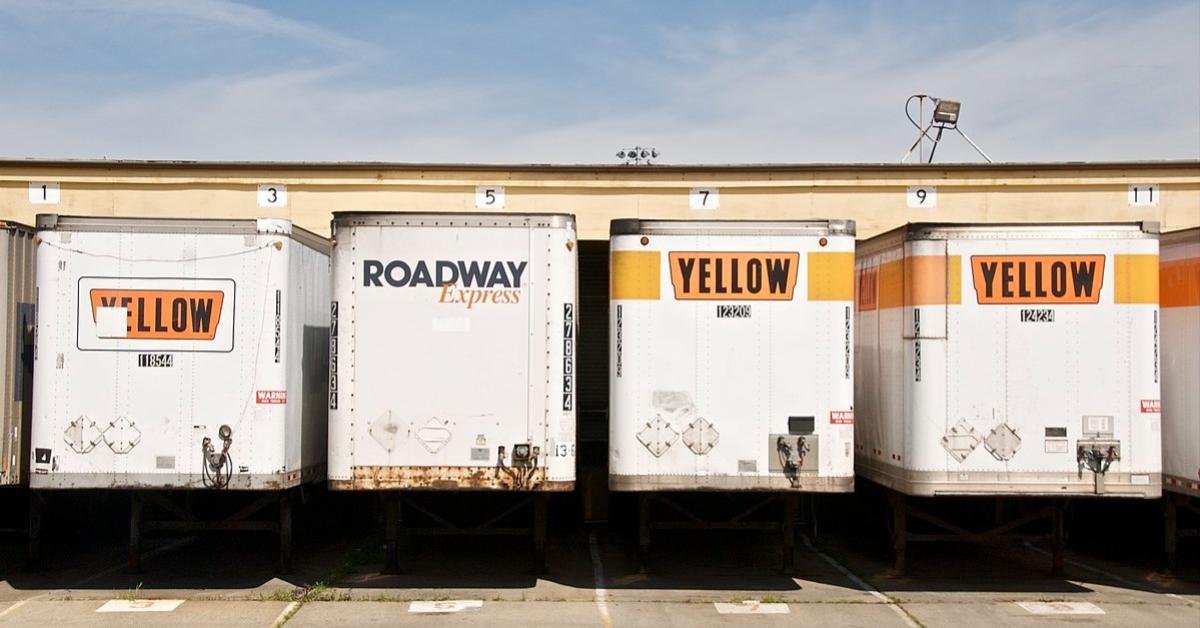
On July 30, Yellow, one of the oldest and largest trucking businesses in the United States, ceased operations and moved to declare bankruptcy. According to reports, the final nail in the coffin of the ninety-nine-year-old business was a labor dispute with the Teamsters Union.
Yellow’s executives also deserve some blame, however. The trucking networks acquired in the 2000s and 2010s were poorly managed, delaying their integration. That said, when the company finally sought integration, the efforts were blocked by the union. The standoff sent Yellow into a dire financial situation which culminated in a dispute over pension payments in July.
The company sought to defer two pension payments to give executives breathing room to navigate the challenging financial situation. In response, the Teamsters threatened to strike, leading customers to flee to Yellow’s competitors. The company entered a tailspin which led to Sunday’s bankruptcy announcement.
Economic losses, and the bankruptcies they can bring, are crucial to the market process. As I highlighted in an article last month, they provide a very motivating signal that specific scarce resources ought to be used elsewhere to better meet the needs and wants of end consumers—which is the entire purpose of the economy.
But this is only true when losses result from voluntary choices made by consumers and producers. Coercive government interventions warp this process in ways that can only make consumers worse off. Firms may be protected from economic losses or put out of business because of government policy. Either way, when government intervenes in the economy, some resources are no longer being used to produce what consumers value.
But sometimes this line between a productive and unproductive economic loss is not obvious. Such is the case with Yellow. Economic losses that result from poor management decisions are productive in that they reallocate resources into the hands of managers who will more competently meet the needs of end consumers. But unions complicate things.
As Murray Rothbard pointed out in his 1963 article “Restrictionist Pricing of Labor,” many “opponents of unionism go to the extreme of maintaining that unions can never be free-market phenomena and are always ‘monopolistic’ or coercive institutions.” But this is not necessarily true. Rothbard explained that the economic costs of restrictionist labor pricing fall mainly on workers themselves—most directly on nonunion workers. And it is possible for nonunion workers to value not undercutting unions more than they value working the highest-paying job available to them.
This possibility is the reason, Rothbard says, for the “mystique” of the labor union and the demonization of the “picket-line crossers” and “scabs.” Unions need very good PR for nonunion workers to voluntarily enter unemployment, or misemployment, to keep union wages high.
All that said, that something is possible in theory is far from a guarantee that it will happen in practice. And as any honest observer of history must conclude, virtually all of America’s labor unions have relied, in large part, on coercion and violence.
The type of union we see today only really started to sprout up toward the end of the nineteenth century. By the early 1900s, unions comprised only a tiny sliver of the industrial workforce. And, as is spelled out in this illuminating recounting of American labor union history by the former US Department of Labor chief economist—and Mises Institute associated scholar—Morgan O. Reynolds, these early unions were able to scrape out an existence, thanks primarily to police inaction. Unions could use violence to “dissuade” outside workers from offering to work at the market rate without fear that the police would stop them. As Walter Block explains in Defending the Undefendable II, this use of physical violence by union members was dubbed the “blue-collar way.”
In contrast, the so-called white-collar way meant getting laws passed to shift the burden of coercion onto the government. If nineteenth-century government support for labor unions took the form of refusing to stop union violence, the twentieth century marked the shift to direct government coercion on behalf of labor unions.
The “white-collar way” began with support for early public sector railroad and postal unions. But despite some union-friendly intervention during World War I, it would take the Great Depression to usher in the bulk of the legal privileges unions enjoy today.
Using as an excuse the flawed notion that the path out of the Depression and to national prosperity started with higher wages, the federal government passed a series of bills that entrenched unionization in the American economy.
The Davis-Bacon Act (1931) and the Fair Labor Standards Act (1938) criminalized lower-paying jobs—driving nonunion workers out of the market. The Norris-LaGuardia Act (1932) gave unions a level of legal immunity enjoyed by few nongovernment entities and declared all nonunion employment agreements unenforceable in federal court. The Wagner Act (1935) gave unions extensive leverage over employers in exchange for some government control over the election of union leadership.
The membership of the Teamsters Union grew with the passage of these laws. By 1941, it was the fastest-growing union in the country, and according to Walter Galenson’s history of the American labor movement, it was also the most corrupt. Even while enjoying the benefits of union-friendly laws, the Teamster of the mid-twentieth century held firmly to the “blue-collar ways.” Besides the union’s deep involvement with organized crime, the Teamsters used beatings, vandalism, arson, and bombings to control the trucking industry.
Although the union’s criminal activity and corruption appear to have dissipated as the twentieth century ended, the legal coercion propping up all organized labor remains. Despite this, private sector union membership has fallen substantially since the early days of these laws—something Reynolds chalks up to a wealthier working class. If the “mystique” of labor unions is nowhere near what it was in the mid-twentieth century, we can be rather confident that the level of unionization today is the product of coercion—in fact must be, at least to a significant degree, because of the laws on the books.
We can never know for sure how Yellow would have fared if not for its battles with the Teamsters. Maybe the labor disputes only accelerated the demise of a company doomed by incompetent management. Or perhaps it would have integrated its acquisitions successfully in the absence of union pushback. Regardless, we can be sure that because of the destructive nature of coercive labor unions, Yellow went bankrupt in a manner that leaves you, the end consumer, a bit worse off.





